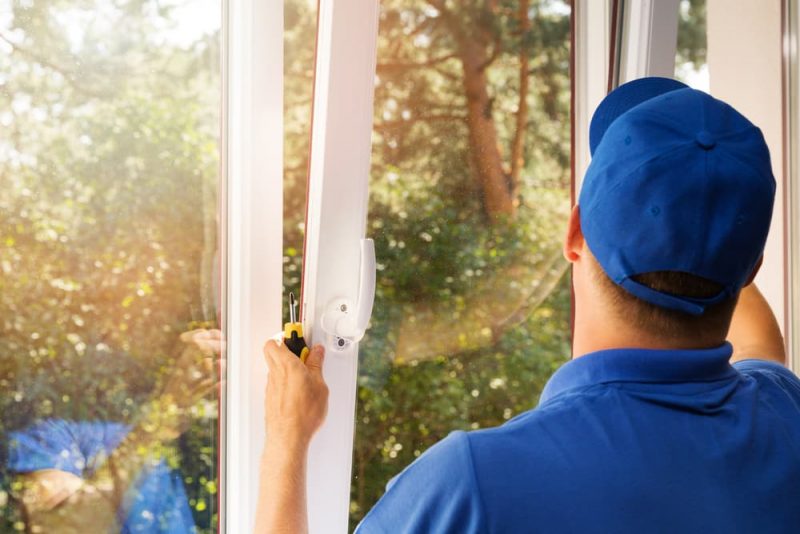With climate change taking centre stage this year, everyone is trying to figure out ways to cut down their energy use to reduce their overall footprint on the environment. But in reality, changing your light bulbs to LEDs, swapping appliances to more energy-efficient ones, and cutting down on driving can only go so far as to reduce your energy use. One change that can make a sizeable difference, however, is replacing old windows for new ones.
Your windows play a big part in your overall energy use. Older, single-pane and unmaintained windows can let cold air into your home and push the warm air out in the wintertime. This puts a strain on your HVAC system which drains energy. In fact, in Ontario, almost a quarter of our total greenhouse gas emissions are a result of heating, cooling, and lighting our homes. To really make an impact, you need to replace your windows with energy-efficient models that have advanced thermal resistant properties and weather-tight insulation. Here we will explain in more depth how new windows are your way to a reduced environmental footprint and what types to look out for when shopping for replacement models.
Your Home and the Environment
When your home is heated with oil, gas, coal or electricity, it uses energy which generates CO2. If your windows are not properly insulated, a significant amount of heat loss can occur through the windows, resulting in more energy (and CO2) being produced to maintain a comfortable temperature in your home. To reduce this impact, window manufacturers have been working to design materials that will greatly reduce heat loss and thermal transmittance. Alternatives have been created to drive down the U-factor by adding more panes, using inert gas in the spaces between the panes, adding Low-E and reflective coatings to maintain heat, as well as new framing materials and better edging and weather-stripping technology. Standards and testing protocols have also improved over the past decade, positioning the industry to strive for more carbon-neutral alternatives.
Carbon Neutral ENERGY STAR® Products
Replacing any old windows with ENERGY STAR® rated products can help to reduce energy use and CO2 emissions. The ENERGY STAR® logo is the standard for energy efficiency. Some provinces also have a rebate program for when you buy ENERGY STAR® windows for your home. Check with your provincial utility companies to find out what rebates are available to you when you do a full replacement or renovation project. In Ontario, Enbridge and Union Gas Home Reno Rebate programs are still active and can save you $5,000 when you upgrade to new ENERGY STAR® windows and doors.
PVC Materials
When purchasing new windows, you should also consider the materials used. PVC, for instance, is a high R-value insulation material that can provide a significant amount of insulation to lower energy use and reduce your impact on the environment.
Insulated Glass Units with Low E-Glass
Do you still have single-pane windows in your home? If so, you are using (and wasting) more energy than you need to maintain the temperature in your home. Modern window technology uses Insulated Glass Units (IGUs) to prevent heat loss through the glass. Unlike single-pane units, IGUs consist of two or more panes of glass separated by an inert gas. The insulating layer and gas diffuse the heat transfer which makes the window much more energy efficient. To improve the performance of IGUs even further, window coatings are also used to reflect and absorb the sunlight. In fact, energy codes in Canada and the US now require that Low-E Glass coatings are to be used in all residential homes. What does that mean for you? Only buy window units that have a low-emissivity glass with a transparent coating to efficiently reflect heat, allow light to pass, and keep the temperature consistent in your home. If you are not sure which type of Low E-glass you need, talk to a window professional first.
Warm Edge Technology
Metal spacers that hold the glass apart are highly conductive and can cause up to 80% of the energy to be lost at the edge. That is a lot of wasted energy that could otherwise be maintained. If you have any windows that still use aluminum edging, these should be replaced by newer ones that offer Warm Edge Technology. This edge feature can greatly improve the thermal efficiency of the window which can equate in significant heat savings and lower carbon emissions.
Advanced Weather Stripping
The weatherstripping around the window plays an important part in energy efficiency. A well-maintained strip prevents any gaps that can let air in or out of the home. And if you live in an area that has colder weather patterns, it is essential to use weather-stripping materials that can provide the highest level of insulation for your home. Look for advanced triple weatherstripping for a superior seal to prevent air leaks and drive up energy use. This advanced technology results in better protection against water and air leakage.
What Else to Look For
A strong frame and sash will also make a difference in the performance of the window and overall energy efficiency. Look for a thick frame and sash that is durable and incredibly strong. New windows are your way to a reduced environmental footprint. The type of gas filler used between the panes is also important. Argon and Krypton are the best gas fillers on the market when it comes to energy-efficiency.
As you can see, the type of windows you have in your home can greatly affect your environmental footprint. For the most energy-efficient designs on the market, turn to Aztech Doors and Windows Vaughan. Our windows feature triple weather stripping, low E-coatings, double and triple-pane IGU technology with Argon gas, Warm Edge technology, and sturdy frame and sash construction for ultimate strength and support.

